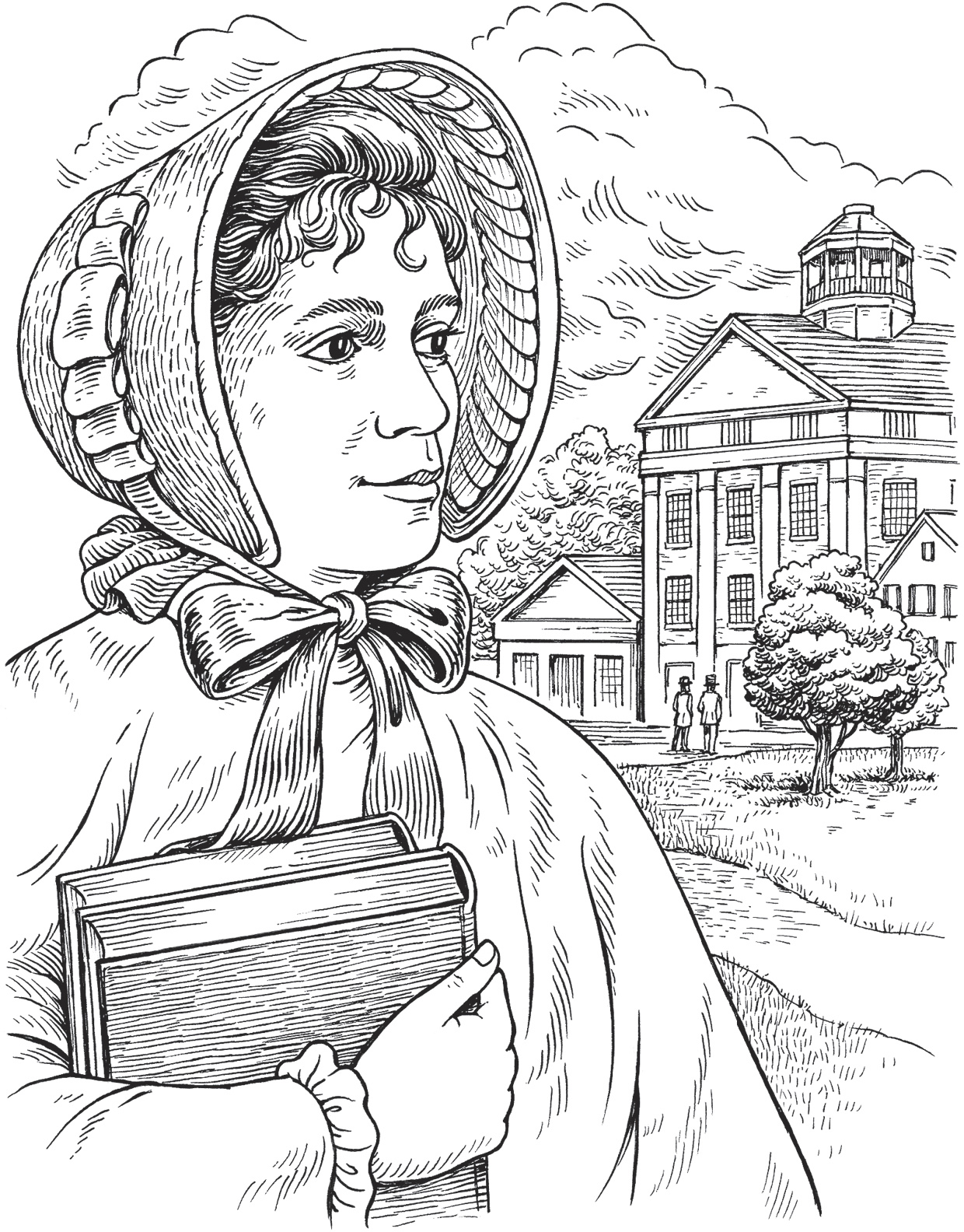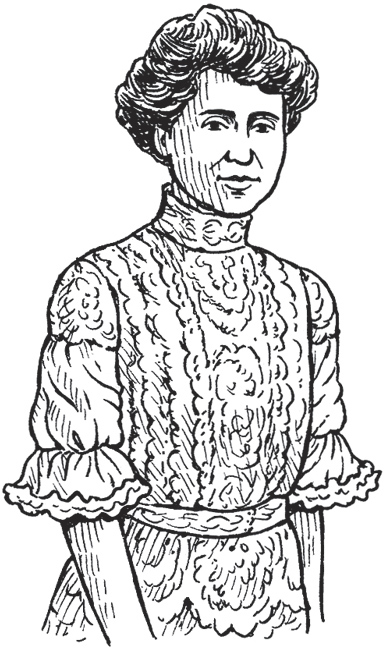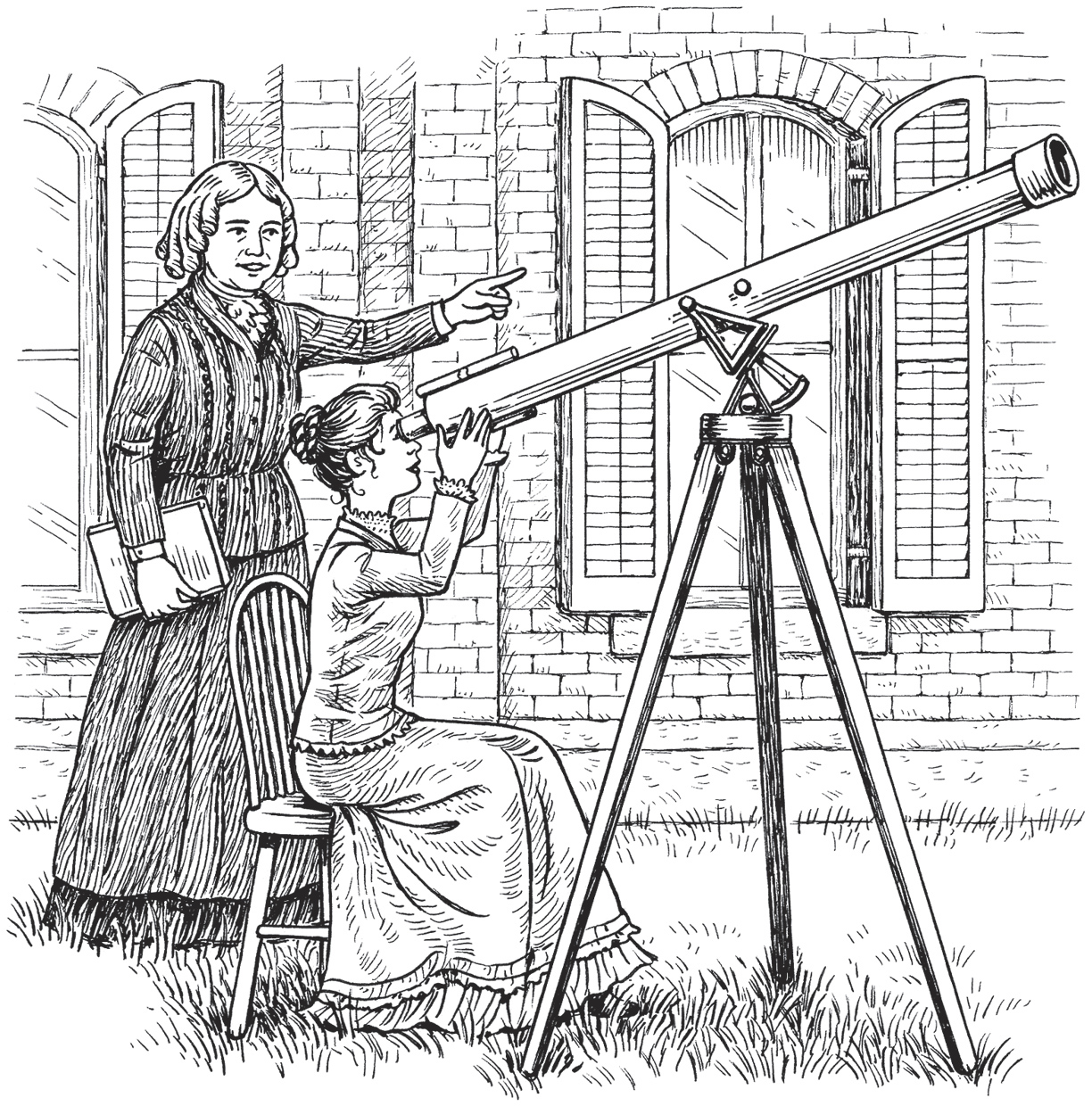CHAPTER 5
Getting an Education
When she was a girl, Elizabeth Cady Stanton could do everything the boys in her high school class did. She could jump fences on horseback, win prizes for Greek, and excel at mathematics.
But there was something Elizabeth couldn’t do when she graduated in 1830. She couldn’t go to the same college as the boys in her class. Girls weren’t allowed. She did go for two years to a special all-girls’ school called a seminary. Some of these schools, such as Mount Holyoke in Massachusetts, founded in 1837, later became regular colleges for women.

Mount Holyoke Seminary School
Mount Holyoke was the first of a group of seven women’s colleges called “the Seven Sisters.” These colleges offered an education that was just as good as what men were getting at places like Harvard and Yale. However, the costs were high, and many other colleges still didn’t accept women. That meant very few girls could dream of earning a college degree. And without a degree, it was difficult to enter professions such as law or medicine. Still, determined women started breaking down barriers.
Elizabeth Blackwell was born in England in 1821 and moved to the United States as a girl. She dreamed of being a doctor, saying, “My mind is fully made up.”
She applied to more than a dozen colleges before she was accepted in 1847 at Geneva Medical College in Geneva, New York. In 1849, Elizabeth became the first woman in the United States to get a medical degree, graduating at the top of her class. Later, she started a small hospital and helped train women in medicine.

Elizabeth Blackwell
Mary Church Terrell (1863–1954)

Maria Mitchell was an astronomer who discovered a comet in 1847. In 1848, she became the first woman elected to the American Academy of Arts and Sciences. She also was a professor at Vassar College (a Seven Sisters school) for twenty-three years. Maria held women’s rights meetings in the college observatory, where she also inspired girls to study science.

Education Today
